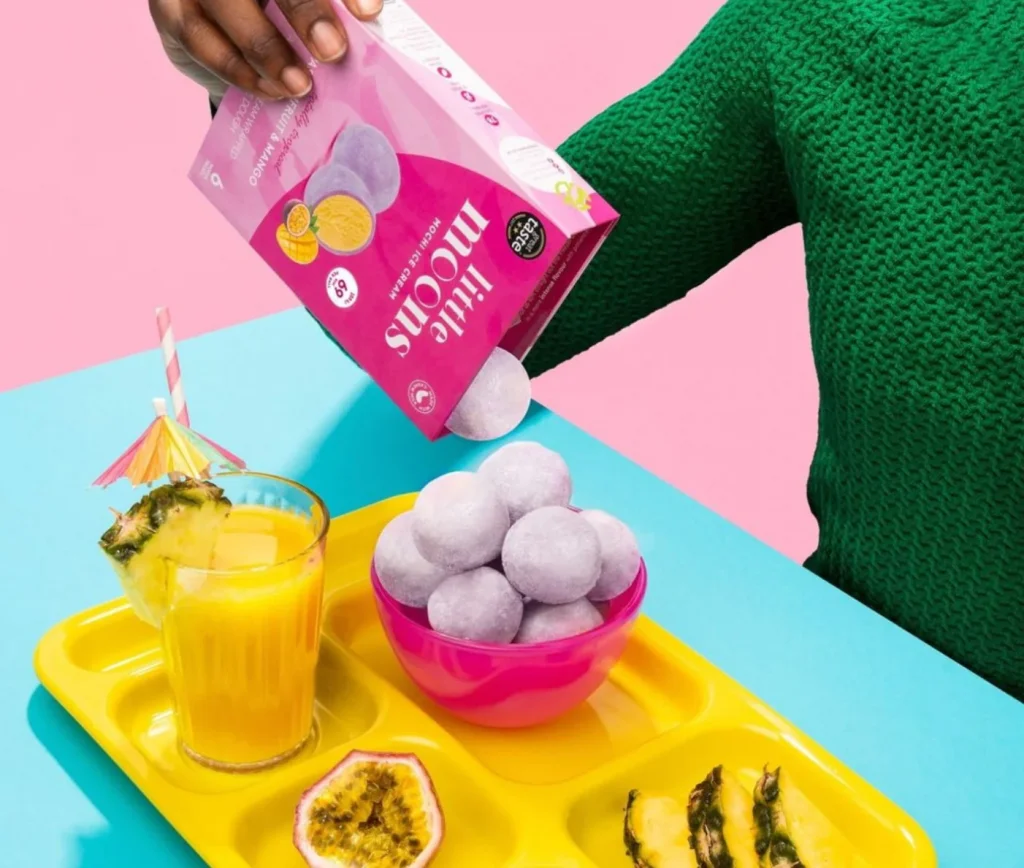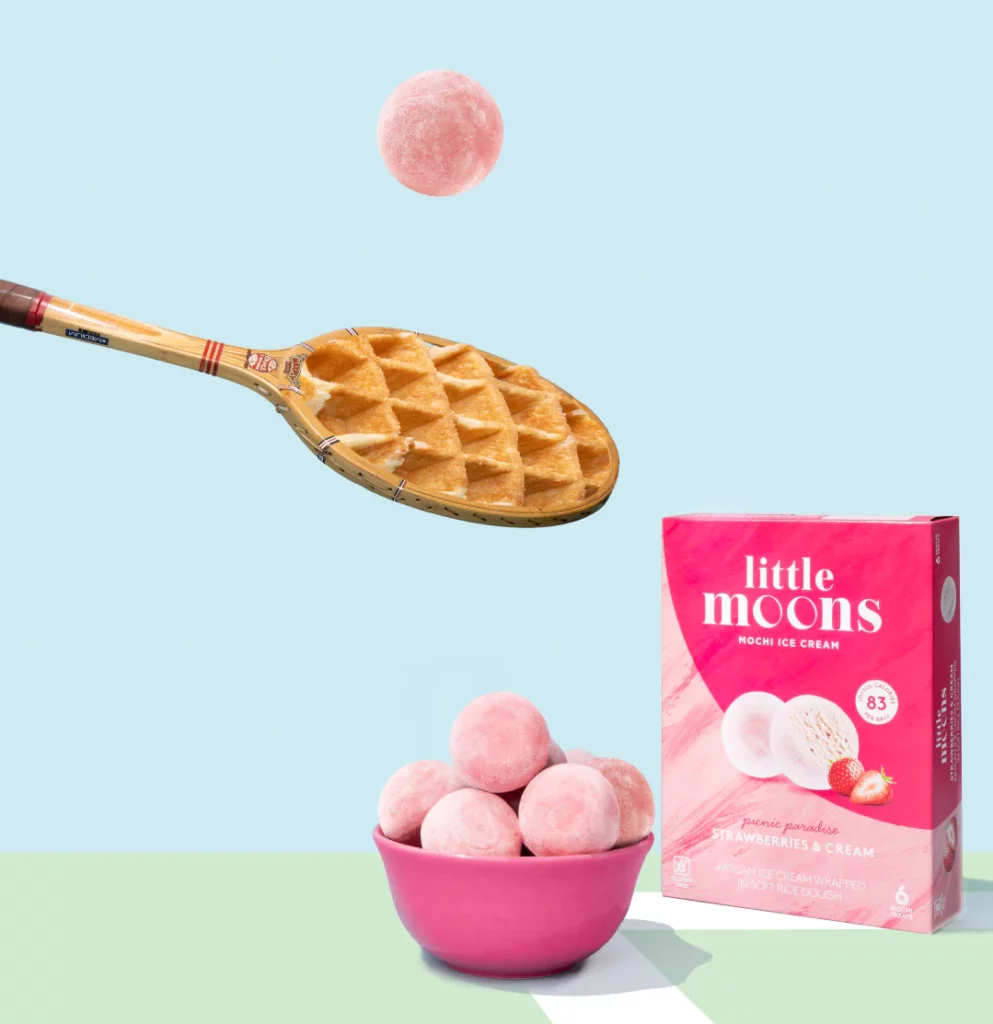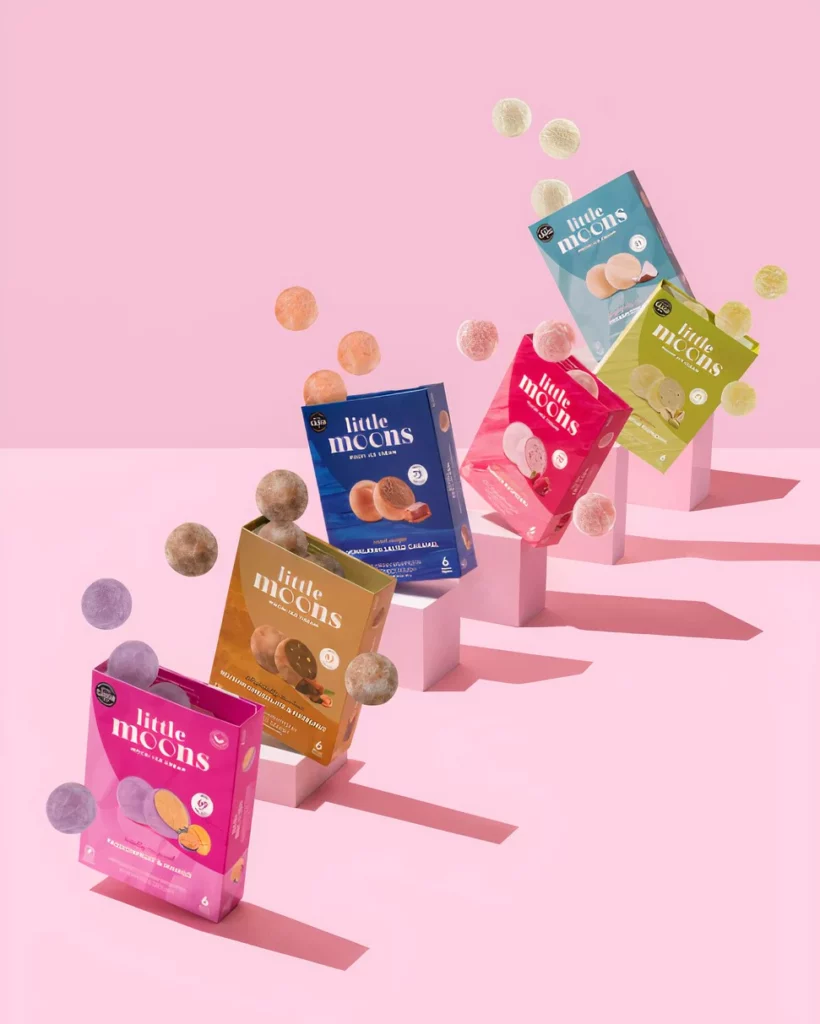
Here at Little Moons, we want to celebrate the fusion of cultures that has allowed us to enjoy these sweet treats. Join us on a deep dive of everything there is to know about mochi, and you’ll be a mochi pro in no time!
And if you have any more burning questions, let’s get the conversation going on twitter with #littlemoons.
WHAT IS MOCHI ICE CREAM AND WHAT IS IT MADE OF?
tle Moons are made up of a soft and sweet rice flour dough. This dough is steamed, pounded, and wrapped around a centre of gelato ice cream.
Mochi is made of mochigome, a short-grain glutinous rice, which is pounded into a paste and then moulded into perfect little balls and boiled or baked.

Because of it’s hand-held format, mochi ice cream is perfect to eat on the go.
It’s wonderfully versatile, and the range of flavours mean it can settle any snacking craving. Need something to pack a punch and wake you up alongside your morning coffee? Why not grab one of our Tropical mochi to kick-start your day. Experiencing a mid-day slump and craving a sweet (but not too sweet) pick-me-up? Try our Pistachio. Or in the mood for something indulgent post-dinner that will leave you feeling satisfied for the evening? Better have a Chocolate Hazelnut to hand!
Something you didn’t know…
How to Pronounce Mochi
We’ve heard our fair share of ways to pronounce this, but the traditional Japanese pronunciation is “Moh-chee”.
WHEN WAS MOCHI ICE CREAM INVENTED?
Mochi ice cream is a relatively new creation, and was invented in the mid-1990s, before seeing mass growth in the 2010s. It does, however, have a background spanning generations:
Before mochi ice cream, there was regular mochi. The technique of pounding rice dough dates back to approximately 300 BC! Mochi itself, in Japanese cultures, it said to give strength to those eating it, and by 1000 mochi became a popular New Year’s delicacy. The notion of eating two mochi – one on New Year’s Eve, and one on New Year’s Day – symbolises the passage of time, and is said to provide warmth, nourishment, good fortune, and good health for the year ahead (great, pass us another pack)!
Daifuku is probably the closest traditional type of mochi to today’s modern iterations. Daifuku is a wagashi (a type of Japanese confectionary) consisting of round mochi stuffed with a sweet filling. The most common filling is anko, which is a red bean paste.
And that then brings us to the wonderful invention that is mochi ice cream – or Daifuku Aisu – swapping red bean paste for sweet ice cream, creating a perfect fusion of Western and Japanese cultures. The concept has taken off in Europe, USA and is being seen more and more across the world.


What does mochi taste like?
Like heaven…if we do say so ourselves.
Mochi has a pillowy soft texture, but the taste itself is fairly neutral. Because of this, it’s actually really versatile to create flavours that compliment the inside – check out our flavours here!
MOCHI NUTRITION GUIDE
What diets is mochi suitable for?
All our mochi ice cream range is gluten free, suitable for vegetarians, and we even have three delicious vegan flavours: Chocolate Hazelnut, Belgian Chocolate, and Tropical Mango and Passionfruit.
Is mochi ice cream healthy?
Our mochi ice cream is perfectly portioned and the calories in our mochi balls range from 60 to around 85, so it’s pretty guilt-free indulgence!
Mochi itself is low in saturated fat and very low in cholesterol. Made from starch, which is good for digestion, mochi contains a host of nutrients and vitamins. The more you know…







